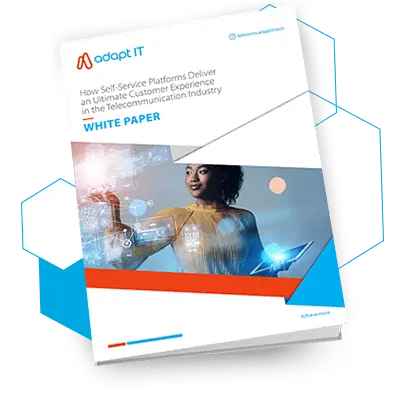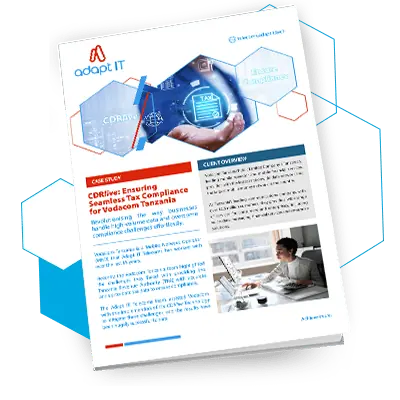The Internet of Things (IoT) is a network where every object has its own identity and can be accessed through the internet. The IoT ecosystem consists interconnected devices that work together towards one goal, such as creating an intelligent city with all its facilities or providing convenience in your home by connecting multiple devices. But what components make up the IoT ecosystem and what will be the impact of this on business as a whole? We examine this in more detail below.
Table of Contents
ToggleWhat is IoT and the IoT ecosystem?
To understand how IoT will impact business, we need to understand what it is. In simple terms, the Internet of Things connects devices, things, and software as well as shares information, enables communication, and allows action and interaction through automation and machine learning. It is an impressive network made up of hardware, software, and applications that all interact and connect with one another using the internet and cloud technology. At the centre of IoT is connectivity, which is why this technology offers such a growth opportunity for Telcos.
There has been a vast increase in the use of IoT to automate and control business processes and operations remotely. As an example, IoT software can allow you to connect all your organisation’s mobile devices to your network and manage them from one central location. This provides more control over how the devices interact with and utilise your networks. Using this technology, you can implement security protocols, manage data as well as track and monitor company assets, all of which can impact efficiency and productivity.
But how does IoT technology do this? The answer is through several interconnected components that make up the IoT ecosystem. We examine these below.
Components of the IoT ecosystem
The IoT ecosystem consists of multiple components that allow businesses, governments, and consumers to connect to their IoT devices. These components include:
- Sensors and actuators – sensors and actuators are at the centre of the entire IoT network. Sensors are connected to assets in the form of a physical micro appliance, embedded into an IoT device. These sensors are responsible for collecting and gathering data in order to send signals or commands to the actuator. The actuator then responds to the signal or command and “acts” or makes something happen based on this signal. As an example, your office may make use of a smart air conditioning system that is set to a specific temperature. Sensors are used to monitor any changes in temperature in the office environment. If a change is detected, they send a signal to the actuators, which will then automatically adjust the airflow.
- Connectivity – this is largely referred to as the network layer and talks about how data is transferred and processed to ensure seamless communication between connected devices, sensors, the cloud, and actuators. For this to work efficiently, these elements need to be interconnected in order to understand the data and respond with the appropriate action. This is where IoT protocols and IoT gateways come in. IoT protocols provide a medium of transport for data collected from sensors. Data then goes through an IoT gateway that collects and translates the data being received via the protocols.
- IoT Cloud – once the data has travelled through the IoT protocols and gateway, it moves to the cloud. The cloud is a high performance compute and storage ecosystem that is used for processing and data storage and brings all the different components of IoT together. In the cloud, data is filtered, managed, and stored. The data is then used to provide real-time analytics for fast decision making about what action should be taken in response to the data collected and signals received.
- IoT analytics and data management – this is used to make sense of the large amounts of data being processed. IoT technology can compute all raw data, being collected and transported, into data analytics which provides actionable insights and real-time solutions that can be used for effective decision making.
- Devices and interface – this is the visible component that an IoT user can use to control the system and set their preferences. This interaction is usually conducted on the device itself or remotely via smartphones, tablets, and laptops.
What are the benefits of an IoT ecosystem for a business?
From the above, it is clear that the IoT ecosystem is a complex system that relies on the interconnectivity of multiple systems. What might not be clear from the above is how an IoT ecosystem can benefit businesses and add value. These benefits include:
- Provides opportunities for new revenue streams – as IoT technology continues to gain traction with consumers and with a push towards smart buildings, vehicle telematics, and industrial automation, there will be an opportunity to provide new offerings that weren’t needed before. These IoT offerings will provide an entirely new revenue stream for many businesses, including Telcos.
- Drives efficiency – an IoT ecosystem allows companies to simplify and automate processes, making them more efficient which in turn makes the workforce more productive. With more streamlined and automated processes, you can get more done faster with fewer resources and less chance of human error.
- New business models – IoT is being used to create new business models through automation and new service offerings. The way businesses are being operated is changing for the better with the inclusion of the IoT ecosystem.
- Improved business insights and customer experience – the speed at which the IoT ecosystem functions allows you to get real-time data, analytics, and insights that can be used to improve operations, product, and service offerings, and this, in turn, impacts the customer experience.
Conclusion
When implemented and utilised correctly, the components of the IoT ecosystem can enhance business operations and productivity. This is done through the automation of processes, management, and storage of large amounts of data and access to essential data insights and analytics. Over the next few years, we expect to see more businesses turning to an IoT strategy to answer the growing need for new consumer and business offerings.

Offer new revenue streams and reduce customer churn
Explore the intricate details of Adapt IT’s APN-as-a-Service and how it enables IoT connectivity, enhance network security, and facilitates the effective management of an organisation’s IoT ecosystem.

Entrepreneurial Technologist with a proven track record in IT, Infrastructure and Service Management.Strong focus on solution design, implementation and integration, specifically within the mobile data and connectivity landscape.







